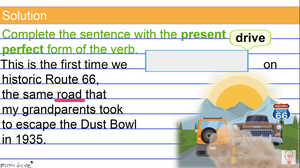We all know that online education differs dramatically from traditional teaching. Learners have more autonomy and freedom, but they also have to deal with more distractions.
Some students have been drawn to online learning like a fish to water. Others, on the other hand, have found it difficult. Due to learning preferences, increased stress, communication challenges, a lack of technical prowess, or a combination of the above, some students may be really struggling with remote learning in ways they weren't when they were in the physical classroom.
While you won't be able to address every online learning problem, there are some things you can do to support your students and perhaps help difficult students become more successful online learners.

Ensure that your online learning portal is intuitive.
Because online programs differ significantly from in-person classes, students must be aware of what to expect when they enter the virtual classroom. Students may become disengaged if they are confused, whereas clarity can increase in-class participation.
While students spend the majority of their time online, now is an excellent opportunity to improve and optimize your web portal. Pay attention to student input and make sure their panels for each class or course are clear and simple to use. To ensure that students have a simple online experience, include clear calls to action and make connections to classes readily available.
It’s helpful to create thorough documentation or the wiki’s explaining the process and portal to your students. A picture is a thousand words– use videos and screenshots to create an easy-to-read walkthrough.
Set clear expectations and check in with your students regularly.
Students may believe that online courses will be easier than face-to-face classes–since they don’t have to mobilize to physically show up to a classroom. This is far from the case, however, as anyone who has taken an online class can attest that online courses can be a significant time commitment and require additional technological, self-management, and organizational skills to succeed.
Make sure students understand your expectations at the outset of the course, such as how much time they should anticipate putting in, where they can access their course materials and submit work, and where they can get support.
You should also make sure that students are familiar with any technology that will be utilized throughout the course. Host a New Student Orientation at the start of the school year so that you can meet with your students and answer any questions. Check-in with them periodically throughout the semester to check how they are doing and to allow them to ask any questions they may have. We recommend you also open up the floor for questions: set specific office hours, or share an email address students can use for support.
Confirm your students have access to an adequate technical stack.
Determine as soon as possible whether your students have the technology required to properly participate in virtual learning. Is every student in possession of a device capable of performing the functions required for online learning, as well as the fundamental software required to run classroom sessions? Do your students have access to high-bandwidth internet, which will enable them to smoothly navigate the learning tools available to them?
It is vital to ensure that every student has full access to the resources they need and that they are able to overcome barriers at home in order to participate effectively online so that no one is left behind.
Use interactive learning tools to increase student engagement.
Diversify the modes in your class sessions. Change the way you engage your students every 20 minutes or so. Make the online learning experience interactive by incorporating slides, videos, polls, lectures, reflection activities, simulations, and more.
This practice will improve student involvement and provide a constructive rhythm in class. You and your students can work together to establish an online environment conducive to learning.
Give (and welcome) feedback.
Any teacher who has spent late nights evaluating essays knows that providing actionable, comprehensive criticism takes time. Under the traditional schooling model of in-person classes, sometimes teachers are so tired when they get home from school that they’re only able to review assignments once prior to returning them to students, making it difficult to provide insights and thoughtful feedback.
An online classroom, however, opens the door to easier access to learning support. Students can regularly engage with their teachers, pose questions, and provide feedback. This gives them confidence that their instructor is paying attention and is concerned about their achievement.
Luckily, online education can help teachers manage their workload in two ways. For starters, unlike traditional classrooms, online courses are not always required to follow a strict schedule.
If lectures are recorded for playback, then students may begin and conclude the course at different times. You may even enact a flexible due time for assignments, will allow you to deal with them one at a time as they arrive.
Respond to your students’ messages.
A timely response time to emails is just as vital as feedback on assignments. If a student sends a question, they need to know that they'll get a response quickly, especially if their inquiries are urgent and time-sensitive.
First and foremost, make sure your students have a way to contact you with questions. It's a good idea to set up a separate email address for this so that the messages don't get mixed up in your inbox. Next, establish specific hours that you will be available to review your emails and answer questions, so your students know when and how to reach you.
Provide academic support.
Some of your students won't require academic support, but others who are having trouble may benefit from extra help or support. Some students may look to you for advice on time management and organizing their studying and homework.
It’s helpful to create an archive of Indexes, glossaries, formula sheets, templates, scoring rubrics, project and paper samples, and short videos to add to your online learning space.
Since all students are different, you may wonder, how will you know how much to support providers and when to do so? Simply inquire! Send your students a survey and ask them if they need extra help.
Offer students a helping hand.
When a student fails a major exam or receives a low grade on a project, they may feel less enthused about their studies. Sometimes, discouraged students lose interest, derailing their progress in the course which may lead to a failing grade or the student dropping out entirely. Provide your students with access to help to prevent negative learning outcomes.
Here are some ways to help your students:
- Provide extra credit assignment opportunities
- Extend the due date of the assignment
- Cancel a scheduled exam!
These acts of academic flexibility present the opportunity for students to grow and move on from their mistakes, helping them keep their goals on track.
Just Listen.
You may discover that struggling kids are typically affected by events beyond their control. They might not have a peaceful place to study. They may lack reliable internet service or access to technology.
In these times, it's critical to just listen to students and give them the opportunity to share their experiences. Help your students find access to an academic counselor or other resources to help them.






